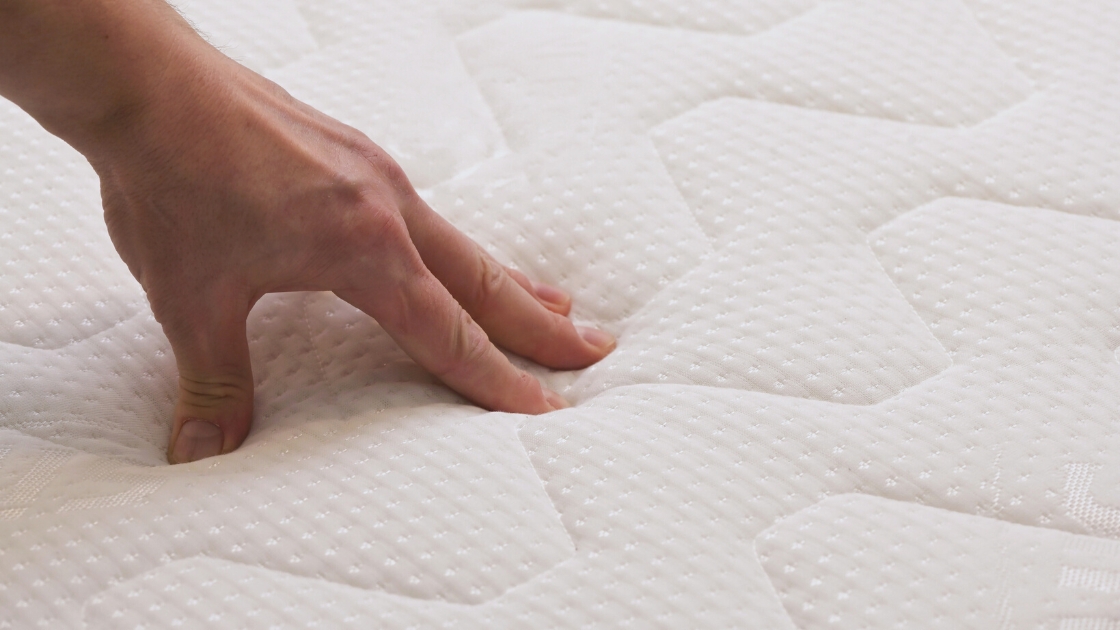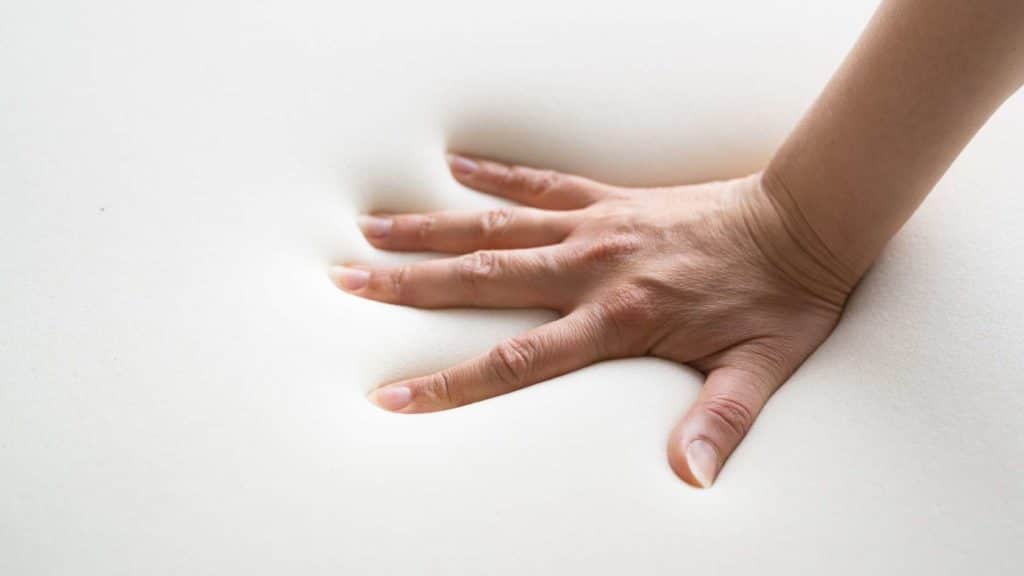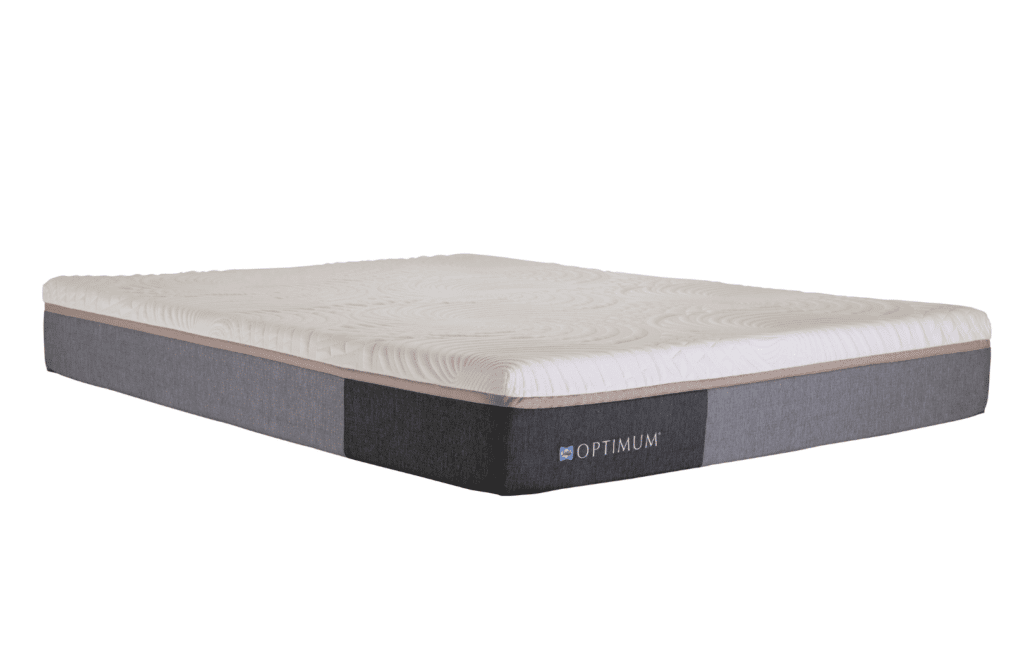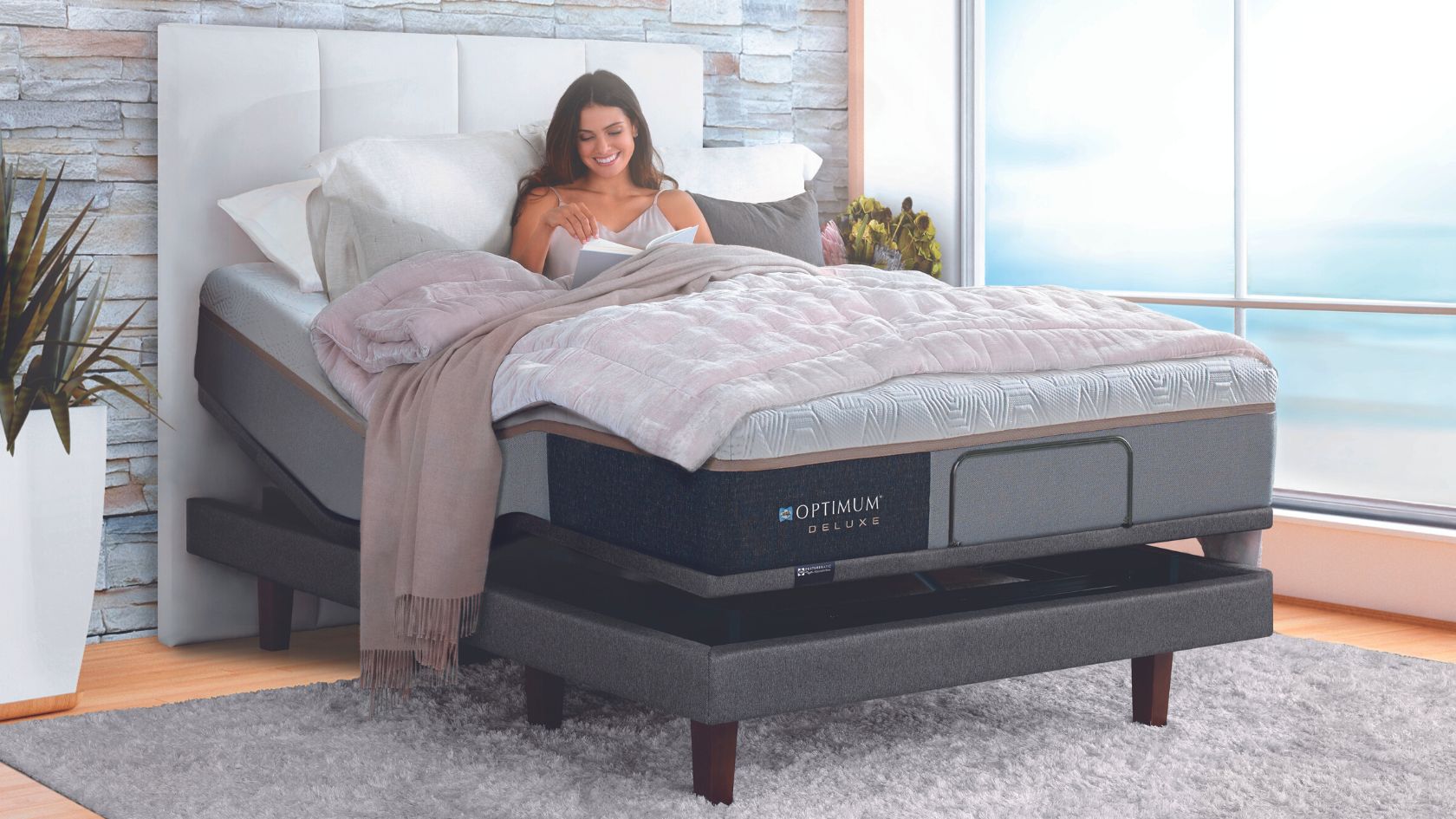
Memory foam is a polyurethane foam, known for being high-density and durable. It provides good support and excellent pressure relief, as we’ve detailed here.
Originally developed by NASA in 1966 for safer cushioning, memory foam absorbs shock and moulds to your form. It is known for its slow ‘spring back’ quality where it gradually returns to its shape even after pressure has been applied. This property is especially useful in mattresses, where it may be combined with other materials for added support. It is often used in both traditional and bed-in-a-box mattresses.
What is memory foam made of?
Memory foam is made of polyurethane foam. Polyurethane is a common material used in a wide range of everyday items including varnishes and coatings, adhesives, building insulation, clothing, shoes, appliances, car parts and more.
When made into a foam, this material is soft and flexible, and can be manufactured to be dense enough to support the body in the form of an entire mattress.

How does it work?
This type of foam is described as ‘viscoelastic’ because of the way it responds to pressure and stress. It is both viscous, meaning that it moves slowly when pressure is applied, and elastic in the way that it can stretch and return to its original shape.
When used in a mattress, the foam contours the body, slowly adapting to your weight and shape. It reacts to body temperature, softening as it warms up. Once pressure is removed from the surface, the material is able to return gradually to its initial shape.
Some types of memory foam bounce back faster than others, depending on their composition. Mattress companies (and their foam suppliers) usually differ in terms of manufacturing processes, chemicals and materials in order to create a unique product. In this way, memory foam mattresses vary in shape, appearance and feel.
What are the benefits for sleeping?
While these types of mattresses have numerous benefits, there are some disadvantages to consider if you are in the market for a new bed.
Pros
- Pressure and pain relief
- Hypoallergenic materials
- Reduced motion disturbance
Because of its contouring and cushioning characteristics, memory foam is a great solution for those who find traditional mattresses painful or uncomfortable. You may wish to consider this kind of bed if you suffer from joint pain, arthritis or bed sores.
Allergy sufferers are also likely to benefit from memory foam. The material is dense and inhospitable to dust mites, and so long as it remains dry, it is typically resistant to mould and bacteria.
The viscoelastic nature of the foam makes it ideal for couples, especially if one is a light sleeper. As the surface does not ‘bounce’ or spring back straight away, you are far less likely to feel any movement on the other side if someone is tossing or turning, or when they get out of bed.

CONs
- Heat retention
- Sinking or ‘stuck’ sensation
- Weight of the mattress
Despite their softness and pressure-relieving qualities, memory foam mattresses are not suited to everyone.
When the surface moulds to the body’s shape, it effectively envelopes the sleeper in a dense cushion. This causes heat to become trapped. Different kinds of memory foam perform better in this category than others, but a foam mattress will generally retain more warmth than a traditional spring mattress.
Though there are firm types of memory foam mattresses, they all have a degree of viscoelasticity that pulls you in. As a result, some sleepers find it harder to move or change positions, feeling ‘stuck’ in the deep cushioning.
Due to the density and the various layers that constitute its support structure, you may find this type of bed to be quite heavy or difficult to reposition. This is important to keep in mind if you need to move the mattress to change the sheets.
Types of memory foam mattresses
Traditional
Classic memory foam mattresses are engineered to contour the body, with a focus on cushioning and spring-back qualities. Because the foam is dense with ‘closed’ cells, these mattresses tend to retain more heat.
Open cell
Open cell memory foam is produced with a different internal structure. The material has internal cells or open pockets that allow for improved airflow and reduced heat retention. The downside is that these mattresses are sometimes less dense, and therefore less supportive.
Gel visco or gel-infused
Gel visco or gel-infused memory foam springs back faster. Manufacturers infuse gel beads into the foam to absorb heat and reduce pressure points. These types of mattresses usually feel much cooler to the touch.
Hybrid
There are a number of mattresses on the market that combine memory foam with other forms of mattress construction. The foam is often paired with a bottom layer of pocket coils or other foams (like latex).

The Sealy Optimum mattress features a unique, ultra-sensitive comfort layer that quickly conforms to the shape of your body. It is designed to absorb muscular tension so you can completely relax.
Choosing the right type of memory foam mattress for you
With so many variations and brands of memory foam mattresses, it may be challenging to know which one suits you best.
Firmness
Just like other kinds of mattresses, these beds have different comfort levels. It is important to consider your sleep position and whether a soft, medium or firm memory foam mattress is better for you.
Density
Foam density indicates how firm the mattress feels and how it performs. A low density foam mattress is typically softer, but is unlikely to feel structurally supportive. Higher density foams, on the other hand, can feel warmer.
Thickness
Thickness is different from density, and is not necessarily an indicator of comfort. Thin foam can be hard or soft, depending on the way it is manufactured.
However, it is important to check that the foam is supportive enough to keep your back aligned throughout the night. Compare thinner mattresses to thick, cushiony models and see which feels right in terms of comfort, support and heat retention.
It may also be important to consider the thickness of a memory foam mattress for your bedding and lifestyle needs. Some foam beds are quite tall, especially if they feature a pillowtop. You may need deep wall sheets to accommodate a thicker mattress.
MATTRESS SELECTOR
Not sure what mattress is right for you?
Simply answer a few questions and we’ll recommend the right mattress based on your unique sleep profile. We will email you your customised results so you can take them in-store to a Sealy retailer near you.
Simply answer a few questions and we’ll recommend the right mattress based on your unique sleep profile. We will email you your customised results so you can take them in-store to a Sealy retailer near you.
Memory foam FAQs
What does memory foam do?
Memory foam is a very durable material, which is designed to slowly mould to the body to help relieve pressure and evenly distribute body weight.
What is the difference between memory foam and regular foam?
Unlike regular foam, memory foam reacts to body heat and pressure, becoming softer and contouring the body. It takes on your shape as pressure is applied, and returns slowly to its original form when you move.
Is memory foam better than a spring mattress?
Memory foam is equally durable as an innerspring mattress, and offers excellent pressure relief and cushioning comfort. Some people are suited to these mattresses, while others require the support of spinal alignment coils. If you are unsure which mattress is right for you, try our Mattress Selector tool.
Is it good to sleep on memory foam?
Memory foam mattresses are great for relieving pain, supporting pressure points and improving sleep quality. They are especially ideal for those suffering from joint pain or arthritis. Everyone is unique, and your ideal mattress depends on your personal sleep requirements. If you are unsure, try our Mattress Selector.


